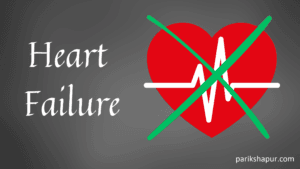
Coronary artery is one of the main blood vessels which supplies blood to the heart. Coronary artery disease is a heart disease in which the main blood vessel (coronary artery) gets blocked by fat buildup and cholesterol deposits. In early-stage coronary artery disease does not have any symptoms but as the cholesterol deposit proceeds towards the complete blockage of the coronary artery, many physical symptoms appear. The blockage of coronary artery is not a one-day process. It takes years for the complete blockage. Symptoms of CAD appears once the blockage percentage crosses 60. A blockage percentage over 70 percentage is treated as an emergency if symptoms are causing enough discomfort.
How common is coronary artery disease?
- Coronary artery disease is one of the most common diseases in the world.
- Approximately 3 lac people die in USA each year due to coronary artery disease. It is among the most death causing diseases in the world.
Symptoms of Coronary artery disease.
You may have a blocked artery and have no symptoms at all. Many people are diagnosed with coronary artery disease post a heart attack. The intensity of symptom depends upon the percentage of artery blocked. One may get no symptom before the blocked percentage has crossed 70. More than 70 percentage of blockage may cause significant decrease in the amount of blood flowing to the heart and as a result carious symptoms mentioned below may appear.
Angina- angina may be described as a pain or discomfort in left chest which may radiate to other parts like jaw, neck and left hand. Angina further can be classified as two types
- Stable angina- It is an angina in which the pain or discomfort appears only when the individual is involved in vigorous exercise and the symptoms disappears when the individual stops exercising or after taking nitro-glycerine. During exercise the oxygen demand of body increases and puts an extra pressure on the heart muscle and in return angina symptoms appears. Sometimes it is experienced after an emotional situation.
- Unstable angina- This type of angina is more dangerous as it is not associated with any possible trigger point. One may experience it while sitting, sleeping or any light activity. It indicates a more serious problem with the heart.
- Shortness of breath- Due to coronary artery blockage the hurt muscle can’t pump enough blood to the body to cover up the oxygen demand, as a result one may experience shortness of breath.
- Dizziness- It is among the most important symptoms to look out for.
Risk factors of coronary artery disease.
- Family history- If an individual is having a family history of coronary artery disease, he is at a higher risk of getting a coronary artery disease.
- High LDL and low HDL- LDL is a type of cholesterol which is considered bad as it is the responsible stuff for plaque buildup in the body and HDL is good cholesterol which helps in maintaining the healthy level of LDL in body.
- High blood pressure- One having high blood pressure carries a higher risk of CAD
- Age greater than 45- CAD is a less common occurrence among the people having age less than 45.
- Assigned male at birth- Male population is more prone to CAD as compared to females.
- Diabetes- Diabetes almost doubles the chances of having a coronary artery disease.
Diagnosis of CAD.
Looking at the symptoms your health care provider may ask you to go through various tests. The most important test in the diagnosis is ECG. If abnormal readings are noted, you may be asked to go through 2D-echo followed by an angiography. Based on all the readings your doctor makes the diagnosis.
Treatments of CAD.
- If the blockage is less than 70 percent and no notable symptom is there then it can be managed by lifestyle changes and some medications.
- If the blockage is more than 70 percent and notable symptoms are there then the first- choice treatment is angioplasty.
- There are more treatment options like bypass surgery.



